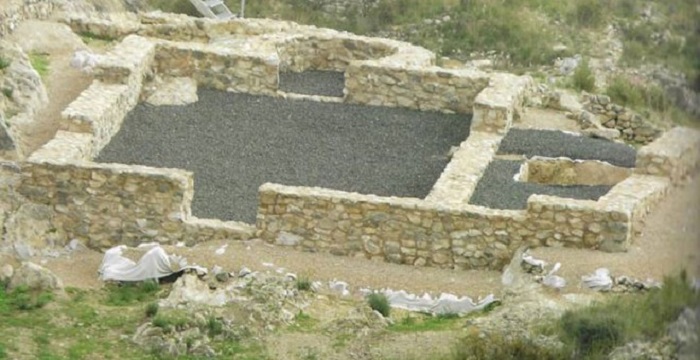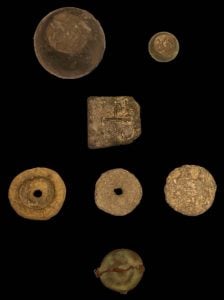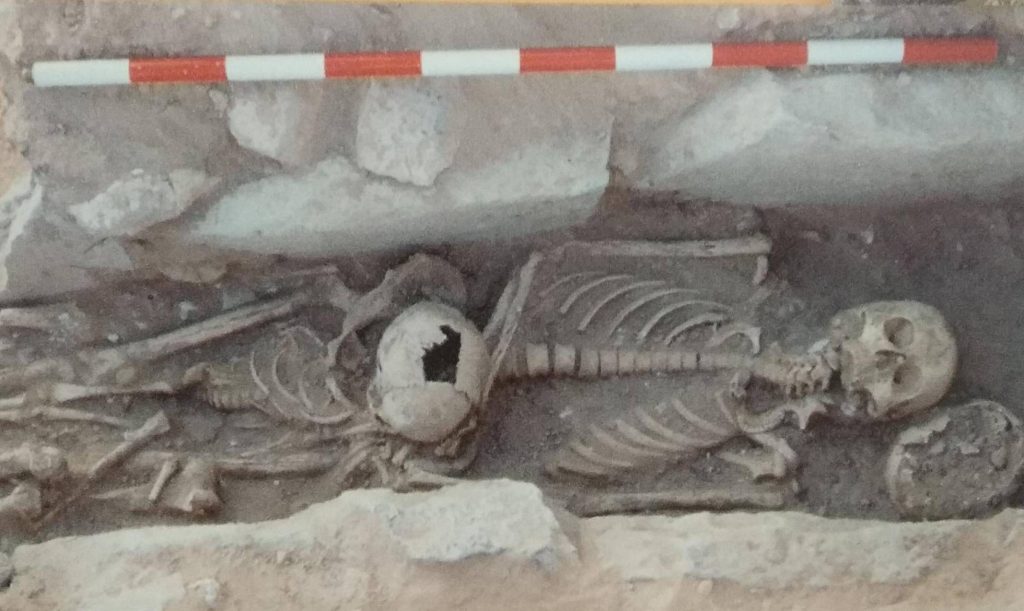
By Ola Goroveci
Archaeological experts from the University of Alicante in Spain have recently identified the first Byzantine monastery ever found on the Iberian peninsula.
They first came across several round metal objects at the archaeological site, which is located in the area of Elda, Alicante. The exact identification of these objects had proven to be a mystery since the 19th century.
In the 6th century, Emperor Justinian forced people to keep a cache of state-minted coins in the main churches of each city. In this way, merchants could show that the coinage they used in economic transactions corresponded with the official money that the Emperor had minted.
The churches used to work as guarantors that buyers of precious metals were not cheated and that the coins in general use had the actual value that they were meant to have. If the operations were fraudulent, the tax revenue was lower — something the Emperor kept close tabs on.

“This apparently is how the monastery of “El Monastil” functioned as a Byzantine administrative and fiscal headquarters by order of the emperor,” explains Antonio Manuel Poveda, a professor of Ancient History and director of the Archaeological Museum of Elda.
The painstaking research at Elda lasted almost 25 years due to the difficulties of identifying the architectural remains. Many different clues had been found during this time, but nothing had proven conclusive.
But now, the results of the latest research have proven that what had been thought to be a Roman or Visigoth site on the highest part of a hill on the outskirts of Elda, was in fact a Byzantine basilica, the first ever built in Spain — and it functioned as an important center for fiscal administration in those times.
The first to point out the presence of possible remains at the monastery site was local municipal archivist Lamberto Amat in 1873, although he could not verify the exact date of its construction.
However, 50 years ago, the organization El Centro Excursionista Eldense discovered a large number of archaeological materials, but it still was unable to identify them categorically and put them into any specific time frame.
It wasn’t until the 1980s when archaeologist Enrique Llobregat could confirm what he called the “existence of a Christian monastery” at the top. He related that he had discovered some marble fragments made according to the Greek style.
Now, in addition to the set of coins with descriptions in Greek, in the last excavations, directed by Antonio Manuel Poveda, a large octagonal column base has also been found, which is typical of Byzantine architecture and unique to date throughout the Peninsula.
A pyxide, or cylindrical ivory box, decorated with a scene of Hercules capturing the Cerinea deer was also found at the Elda site. Pyxides were common objects throughout the Greek world and often contained small objects. This seems to be indicative of an attempt by the Byzantines to fuse their Greco-Eastern ancestry with Western Christianity.
The convent church occupied an area of about 84 square meters (904 square feet) in this hilltop religious center. Various metal items from Byzantine-era liturgical rituals have now also been found and identified, including a tiny knife (lancia), used in the preparation of the sacred bread before Communion, as well as a teaspoon (cochlear), which is still used in the Communion rite today throughout Orthodoxy.
Poveda asserts “These objects constitute the only Hispanic group belonging to the Byzantine Christian ritual in Spain. In addition, North African, Oriental and local ceramic materials have also been documented, dating from the second half of the 6th century.”

The archaeologist added that in 1991, when the A-31 highway was built in this same area, a total of ten graves with 16 bodies were unearthed during construction works. Four of the people had been wearing rings engraved with the Greek letter sigma, and one of them even had a Greek cross.
See all the latest news from Greece and the world at Greekreporter.com. Contact our newsroom to report an update or send your story, photos and videos. Follow GR on Google News and subscribe here to our daily email!



